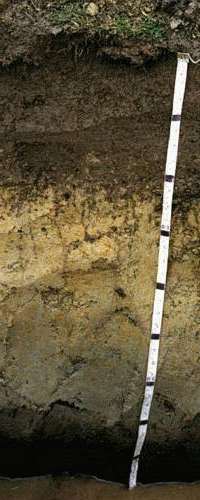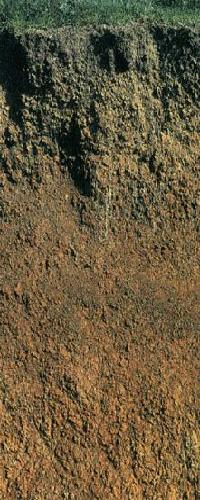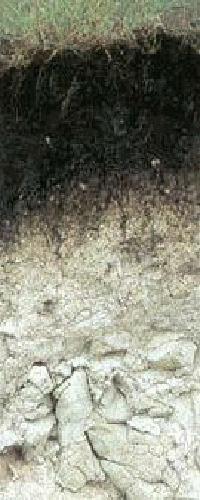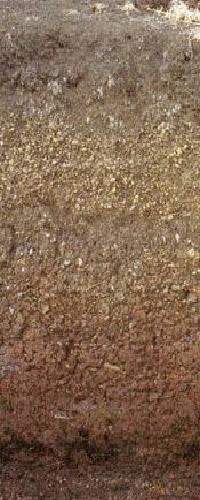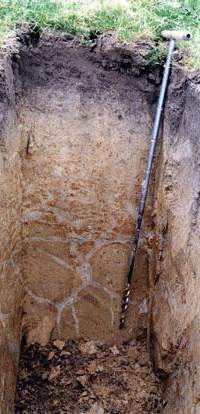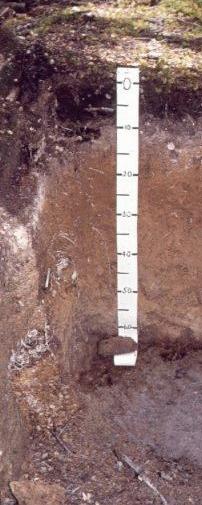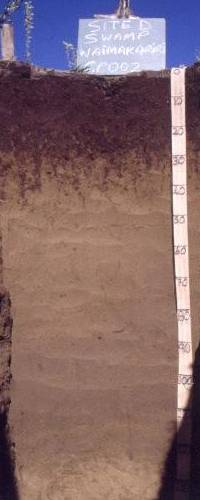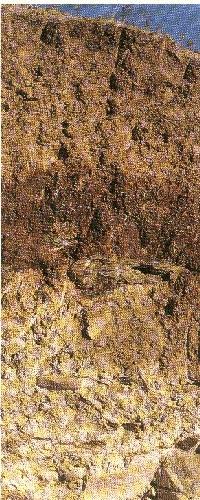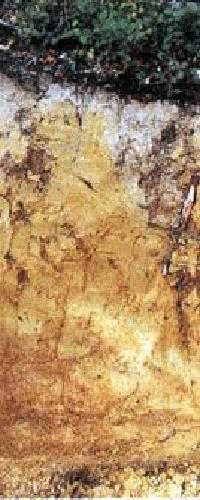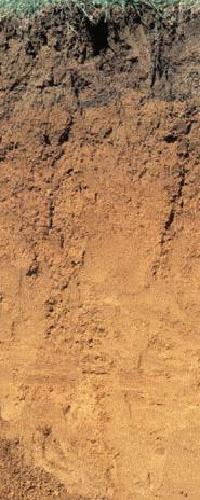
New Zealand Society of Soil Science
Allophanic Soils are dominated by allophane, (and also imogolite or ferrihydrite) minerals. These stiff-jelly-like minerals coat the sand and silt grains and maintain a very porous, low density structure with weak strength. The soils are identified by a distinctly greasy feel when moistened and rubbed firmly between the fingers. The soils is easy to dig and samples crumble very easily when crushed in the hand. When moist the topsoil is usually very dark brown or black and the subsoil is usually yellow-brown.
Occurrence
Predominantly in North Island volcanic ash, and in the weathering products of other
volcanic rocks. They also occur in the weathering products of greywacke and schist
in the South Island high country (5% area of NZ).
PHYSICAL PROPERTIES - Porosity is high and the soils are rapidly permeable. Because the bulk density is very low and there is little resistance to root growth. In many soils the potential root depth is very deep Topsoils are stable and they resist the impact of machinery or grazing animals in wet weather Topsoil and subsoil horizons are friable. Erosion rates are generally low except on steep slopes or exposed sites. A pronounced loss of strength occurs on disturbance
CHEMICAL PROPERTIES - The ability to retain phosphorus is very high Natural fertility is limited
BIOLOGICAL PROPERTIES - High populations of soil organisms, particularly in A horizons
CLIMATE - Soils are usually moist with more than 1000 mm/year rainfall.
Soil groups of the allophanic soil order:
Perch-gley Allophanic Soils- periodic wetness caused by a perched water table
Gley Allophanic Soils - periodic wetness caused by a groundwater table
Impeded Allophanic Soils - have a hard layer that impedes roots and water
Orthic Allophanic Soils - ordinary Allophanic Soils.

